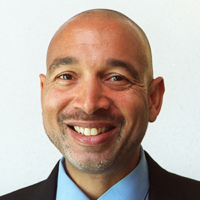The US Supreme Court seems to have appointed itself as a rogue Environmental Protection Agency, seeking to protect polluters rather than the public.
The latest evidence comes in the arguments the court heard last month in the challenge by Ohio, Indiana and West Virginia to the Biden administration’s “good neighbor” plan. The plan cuts power plant and industrial ozone pollution that wafts from central parts of the nation into eastern states.
According to the American Lung Association, nearly 120 million people in the nation—one of every three—lives with unhealthy levels of particle and ozone pollution. The White House says its plan would decrease asthma symptoms for millions of people and prevent up to 1,300 premature deaths per year. The plan would also provide “a broad range of unquantified benefits, including improving visibility in national and state parks and increasing protection for sensitive ecosystems, coastal waters and estuaries, and forests.”
Science leaves little doubt that the plan protects people. Globally, fine particulate pollution and ozone are tied to more than 8 million deaths each year according to a 2023 study in the British Medical Journal. That includes 5 million deaths linked to breathing in the emissions of fossil fuels. In the United States, a 2022 study by researchers at the University of Wisconsin found that more than 50,000 lives per year would be saved by eliminating those emissions.
But in the rogue EPA that is the Supreme Court, packed to an ultra-conservative majority by presidents with little or no concern for the environment, science and the fatal toll of pollution seem to take a back seat to concerns about the unfettered freedom of polluters to profit regardless of their harmful business practices. In a prime example during the “good neighbor” arguments, Chief Justice John Roberts told lawyers for the EPA he was worried the agency will not assess the impact of the ozone rule “until after the hundreds of millions of dollars of costs are incurred.”
The majority also seems utterly disinterested in the fact that a solid majority of people in this country want action on climate change and pollution. A CNN poll in December found that 73 percent of respondents in the United States say the federal government has some level of responsibility to curb climate change. In a Pew poll last summer, two-thirds of respondents said the federal government is not doing enough to protect air and water quality.
Nonetheless, decision by eviscerating decision, the court is rendering the EPA a shadow of what it was intended to be. Considering the rulings the court has already made and rulings it is expected to make this term, there is hardly any aspect of air, water or land that is not losing protection. The implications for human life are direct and deadly.
Ignoring pollution’s toll
The court’s 2022 decision in West Virginia v EPA limited the EPA’s ability to cut carbon emissions from power plants, effectively ending efforts launched by the Obama administration. The proposed rules would have saved up to 3,600 lives a year and avoided 90,000 asthma attacks, 1,700 heart attacks and 300,000 missed school and workdays.
Then there is the 2023 ruling in Sackett v EPA. It removed wetlands and ephemeral streams from federal protection unless they were indistinguishably connected to larger lakes and rivers at the surface. The decision blatantly ignored decades of hydrology showing how wetlands have invisible underground connections to larger bodies of water and serve a critical role as nurseries for many creatures.
The court’s conservative majority went so far as to ignore EPA science conducted during the conservative George W. Bush administration. The EPA back then discerned that the drinking water for one of every three people came at least in part from streams that did not run all the time. Thus, the EPA said seasonal streams “should not be examined in isolation.”
And despite the sympathetic ears conservative justices give to the profit concerns of big business, they ignored how clean water is its own economic engine, contributing mightily to the national outdoor recreation economy. The Bureau of Economic Analysis last year estimated that recreation economy was worth $564 billion in 2022, providing nearly 5 million jobs.
Ominous signs in decisions ahead
The rulings to come may defang the EPA even more. In addition to the “good neighbor” ozone case, is one that may end up being the most important of them all. A 40-year-old Supreme Court ruling (Chevron v. National Resources Defense Council) compels judges to defer to federal agency scientists and experts in disputes over how ambiguously written laws should be implemented. But in January, during arguments in two cases involving herring fishermen in Rhode Island and New Jersey who objected to federal requirements to pay for at-sea monitors to prevent overfishing, the conservative justices seemed sympathetic to the notion that such deference results in too many burdensome regulations.
Justice Neil Gorsuch has already said that Chevron should be overturned, denigrating government scientists as bureaucrats. He wrote in 2022 that deference “deserves a tombstone no one can miss.” In the January arguments, he bemoaned an atmosphere where “automatically whatever the agency says, wins.”
What Gorsuch did not say is that a ruling that destroys deference to federal agency science, on top of the high court’s relentless stripping of the EPA’s powers to protect our air and water, will surely mean that whatever polluters say, wins. It would put any new initiative for environmental protection at automatic risk of being snuffed out.
For instance, the Biden administration last month announced tighter rules for industrial soot pollution, saying the move will prevent 4,500 premature deaths a year and 290,000 lost workdays. EPA Administrator Michael Regan called the rules a “game changer” for public health. But industry is already howling about the rule. The US Chamber of Commerce, the American Petroleum Association, the American Chemistry Council, the National Association of Manufacturers, and a host of lobbyists for polluting industries wrote a joint letter to the White House complaining that cutting soot will cost the nation jobs; the Chamber of Commerce and some 25 states have already filed lawsuits opposing the rule.
But what about the millions of people whose lives have been extended over the last half century by federal regulation and millions more who could benefit from the tightening of rules as the science of pollution and climate change keep improving? For instance, the science on forever chemicals that do not break down in the environment (PFAS) has emerged in just the past few years, suggesting that they may have played a role in millions of deaths in recent decades.
The current court is silent on that. It is living up to the fears of Justice Elana Kagan. In a blistering dissent over the 2022 decision to curtail the powers of the EPA on regulating power plant carbon dioxide emissions that fuel global warming, she said: “Whatever else this Court may know about, it does not have a clue about how to address climate change. . . The Court appoints itself—instead of Congress or the expert agency—the decision-maker on climate policy. I cannot think of many things more frightening.”
A history of bipartisanship
In the end, given the lives at environmental risk, the Supreme Court’s kneecapping of the EPA will have an enormous impact on public health. Impervious with its lifetime appointments, this court is so conservative on environmental issues that it is erasing the bipartisan commitments of the 1970s, including the capitulation to public sentiment by one of the most conservative US Presidents of all: Richard Nixon.
Nixon was never an environmentalist at heart. In a secretly taped meeting with automotive executives Henry Ford II and Lee Iacocca, Nixon said environmentalists wanted to drive the nation backward to living like “damned animals” and back to what he unforgivably described as the “dirty, filthy, horrible” ways that Native Americans lived.
But, despite his personal beliefs, Nixon was pressured by the times to respond to burgeoning ecological concerns ignited by Rachel Carson’s 1962 Silent Spring, and the 20 million people protesting for the planet in the first Earth Day in 1970. For all of his private ill will, he created the EPA and the National Oceanic and Atmospheric Administration and signed the Clean Air Act and the Endangered Species Act.
In his 1970 State of the Union address, Nixon went so far as to say, “The great question of the seventies is, shall we surrender to our surroundings, or shall we make our peace with nature and begin to make reparations for the damage we have done to our air, to our land, and to our water? Restoring nature to its natural state is a cause beyond party and beyond factions.”
One can only hope that at some point, the people’s voices will echo as loudly as they did on Earth Day, 1970. If the likes of Nixon could be forced to bring the EPA into existence, perhaps today, with some 1 billion people around the world participating in Earth Day events, the people can once again speak loudly enough to get Justices Gorsuch, Roberts and their fellow conservative colleagues to recognize the vast expanse of tombstones from pollution and climate change that will result from their rulings.

